


In 2009 a remarkable story emerged in all the major media outlets about a rock in a Dutch museum that wa labelled as coming from the moon, but which in reality was a piece of fossilised wood. The rock was supposedly given to a former Dutch Prime Minister, Willem Drees, by the then US Ambassador J. William Middendorf during the Apollo 11 Goodwill tour by returning astronauts Armstrong, Aldrin and Collins.
The story not only had headline writers in a bit of a whirl but sent tinfoil hat wearing basement keyboard warriors frothing at the mouth, citing it as some sort of proof that Apollo was a fraud and the moon rocks are all fake.
One small problem -
This page will attempt to explain the real story behind the moon rock and suggest an alternative motive for the story: an art stunt.
First of all let’s deal with that rarest of things when it comes to Apollo hoax believers, ‘facts’.
The ‘Giant Leap’ goodwill tour was initiated by President Nixon as a piece of global flag waving hoop-
These are what was given out:
- A replica of a silicon disk carried to the lunar surface containing messages from participating heads of state
- A magnifying glass to examine the disk
- A plaque bearing a replica of the one on Apollo 11’s lander.
- Various photographs.
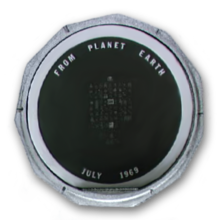
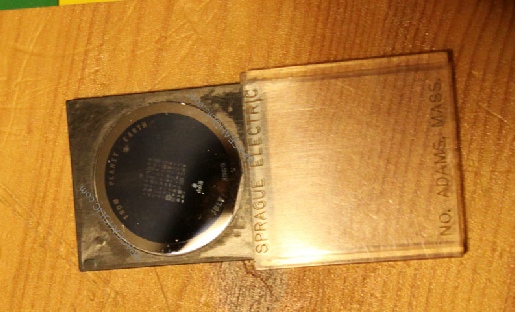
Notice what’s missing from that list?
Moon rock.
Apollo 11’s lunar samples were airlifted from USS Hornet on July 25th 1969 and headed (via another flight) to the Lunar Receiving Laboratory where they were catalogued and analysed (see here). Data from these analyses were published in September. Work continued on the samples and a major conference was held in January 1970 detailing the findings by the principal investigators from all over the world. These investigators weren’t given access to them until mid-
In other words by October 1969, when Apollo 11’s crew visited Holland, the samples were only just out of quarantine, were still being worked on and were definitely not being given out as gifts.
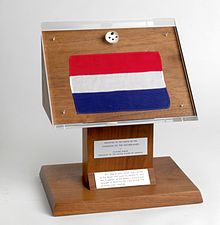
It’s worth repeating this again: No Apollo 11 astronaut had any moon rocks in their possession to give away on the Giant Leap Goodwill tour, neither did anyone else travelling with them. The rocks were still being worked on by scientists and the political decision to start distributing them had not yet been taken.
Now to the tour.
The Giant Leap rolled into Holland on October 9th having spent the night in Paris, leaving the same day for Belgium. The visit included a trip to the Royal Palace to see Queen Juliana, a museum exhibition about the landings, a quick canal trip and some handshaking with admirers before heading to the airport for lunch. Pretty much every moment was filmed and photographed. Here are some of them:
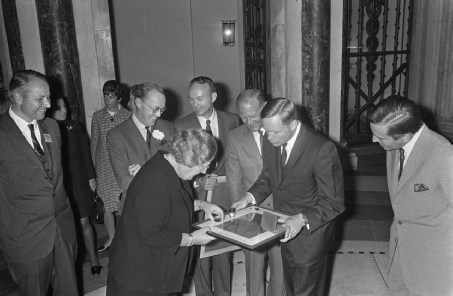
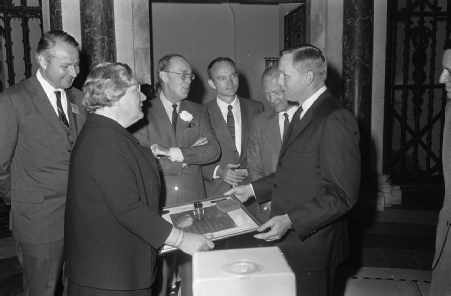
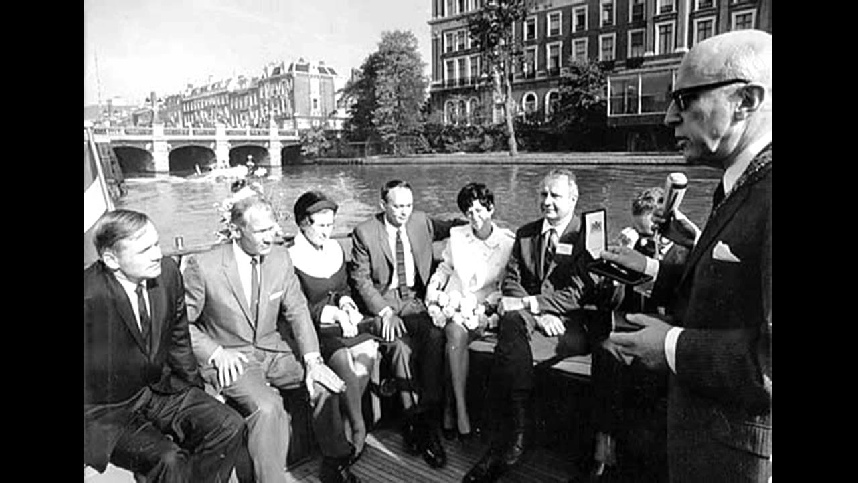
All in all they spent less than 4 hours in Amsterdam. Visiting exhibitions, shaking hands and meeting the Queen.
When they met the Queen, they handed over the same gifts that they had presented to many other heads of state listed above -
No rocks, no lunar samples. Conspicuous by his absence in any of the pictures or movie footage is former Dutch PM Willem Drees. Why? Because he wasn’t there. One person who is visible is newly appointed US Ambassador Middendorf standing to our left of Michael Collins.
We now need to move on a little to a point after Drees’ sad demise in 1988. In 1991 his son donated a collection of personal effects to the Rijksmuseum in Amsterdam. These effects were duly arranged in a nice case and stashed away in a basement. Then comes the interesting bit.
While looking for props to support their 2006 art exhibition ‘Fly me to the moon’ they came across the case and found two objects of interest, namely this card (below left) and this rock (below right):
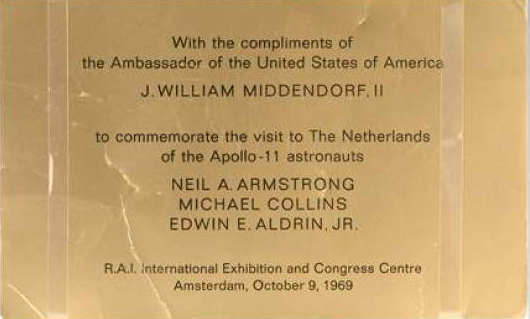
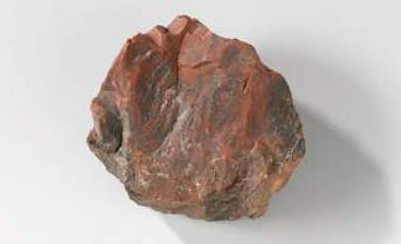
Here’s a photo of the case, as given in the exhibition handbook (my personal copy).
As you can see, the rock and the card are together in the box.
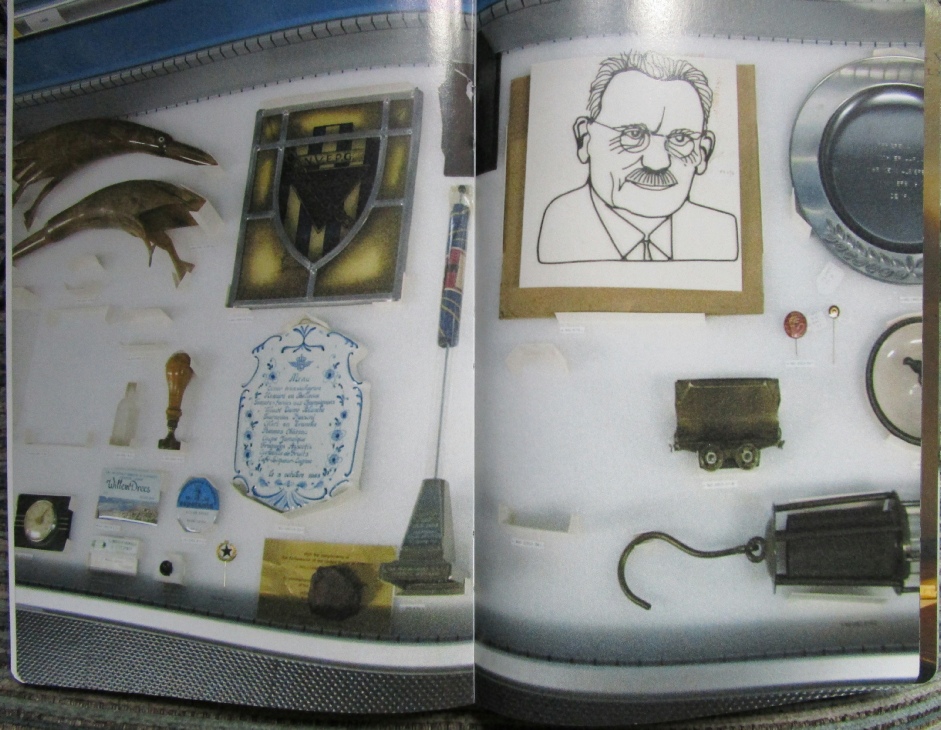
What you can also see is that (other than the rock) all the objects are mounted in specific positions. Arguably, the card is also out of place resting on the bottom of the case rather than mounted as the other objects are.
All of the objects have a reference number underneath, apart from those two. It’s also noticeable that there are several places where no object can be seen, although to be fair none of them would seem to be the appropriate dimensions for either the card or the rock.
We can also see from the photographs they produced for the exhibition that the artists placed the two objects together.
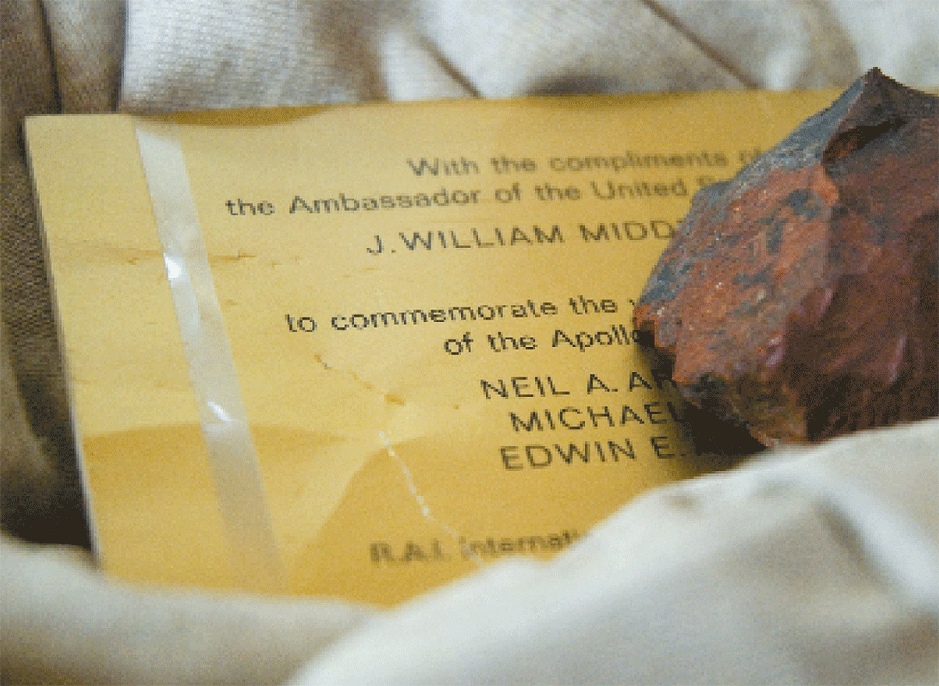
However the card does not seem to be present in the exhibition itself.
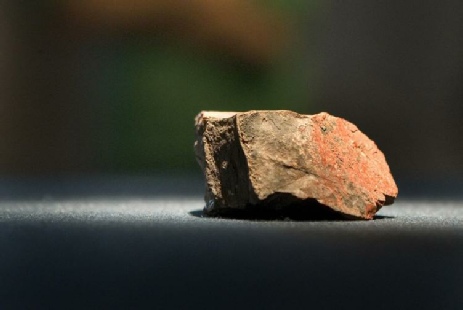
The exhibition book also makes this very specific claim:
“Drees received a piece of moon rock from the American Ambassador”
They present no supporting evidence for that to be the case, and can only be drawing their conclusions from the juxtaposition of the two objects. Interestingly, the also record that Drees began donating objects to the museum in 1967.
Fast forward a few more years and a story is published in a British national daily newspaper, the Daily Telegraph.
The internet duly goes nuts, with hoax nuts frothing at the mouth at the discovery of some suspected shady dealings! But what do the participants have to say?
Middendorf was contacted for his response to the story, and he said this:
“I do remember that Drees was very interested in the little piece of stone. But that it's not real, I don't know anything about that.”
while the museum is quoted as saying that
“The "rock" had originally been been vetted through a phone call to NASA.”
Well heck, doesn’t that just prove it?
Well, no.
Firstly, the story broke in 2009, 40 years after the event, and the now elderly Middendorf is being asked over the telephone what he recalls about an equally elderly man and a rock. Nowhere does he say that he gave Drees the rock. Nowhere does he say that anyone from NASA gave Drees a rock -
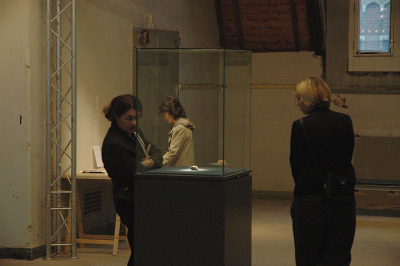
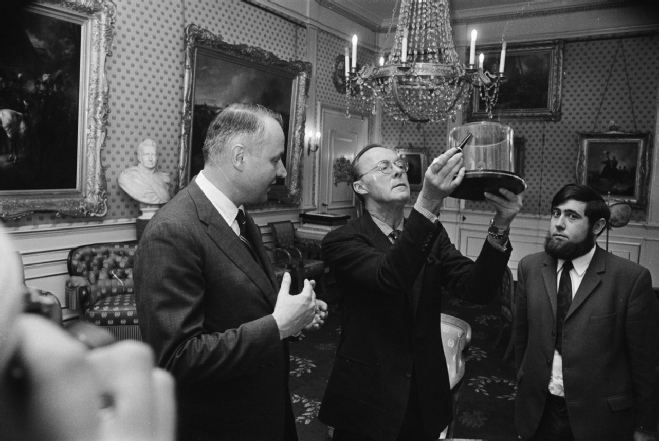
Is it possible that Middendorf is mixing up events in his 84 year old mind?
My argument is that he is.
My claim is that two artists used items they found to create an interesting artwork. They either deliberately or accidentally juxtaposed two separate objects and presented them as being connected. They assumed, again either mistakenly or deliberately, that the card from Middendorf showed that the fossil was a moon rock despite the card making no such claim.
They certainly made no effort to dispel the controversy that erupted, and even have a section of their website devoted to it. They make no comment on it at all.
As far as I am concerned two artists with a history of provocative exhibitions and stunts invented this story, either by accident or design, and the museum became a victim of it by continuing to display two completely unrelated objects together and presenting the rock as being lunar in origin.
At no point whatsoever does anyone from NASA ever say that the Drees rock is lunar in origin. At no point does anyone involved in the story claim the Apollo 11 crew donated the rock. The only documented claim that the ‘maansteen’ is from the Apollo 11 mission comes from the artists themselves.
The Rijksmmuseum’s own investigation (carried out by their in-
For some more excellent explanation, enjoy these two marvellous videos on the subject.
As well as this page, that has independently arrived at the same conclusion: it wasn’t given to former Prime Minister by NASA, and no-
Here’s what the disk looked like:
It wasn’t until 1970 that lunar rocks began to be sent to countries in the form of small rice sized grains consisting of material returned from testing, encased in acrylic and mounted on a plaque above a flag flown on the mission. Here is Holland’s on the righbt.
Nixon ordered the plaques in November 1969 and began distributing them the following year. Larger sized rocks started appearing in touring exhibitions and museums in 1970.
Is it possible, perhaps, that Middendorf is recalling this rock (left).
Middendorf is holding an actual lunar sample that toured Europe in early 1970, visiting Rotterdam at the end of January.